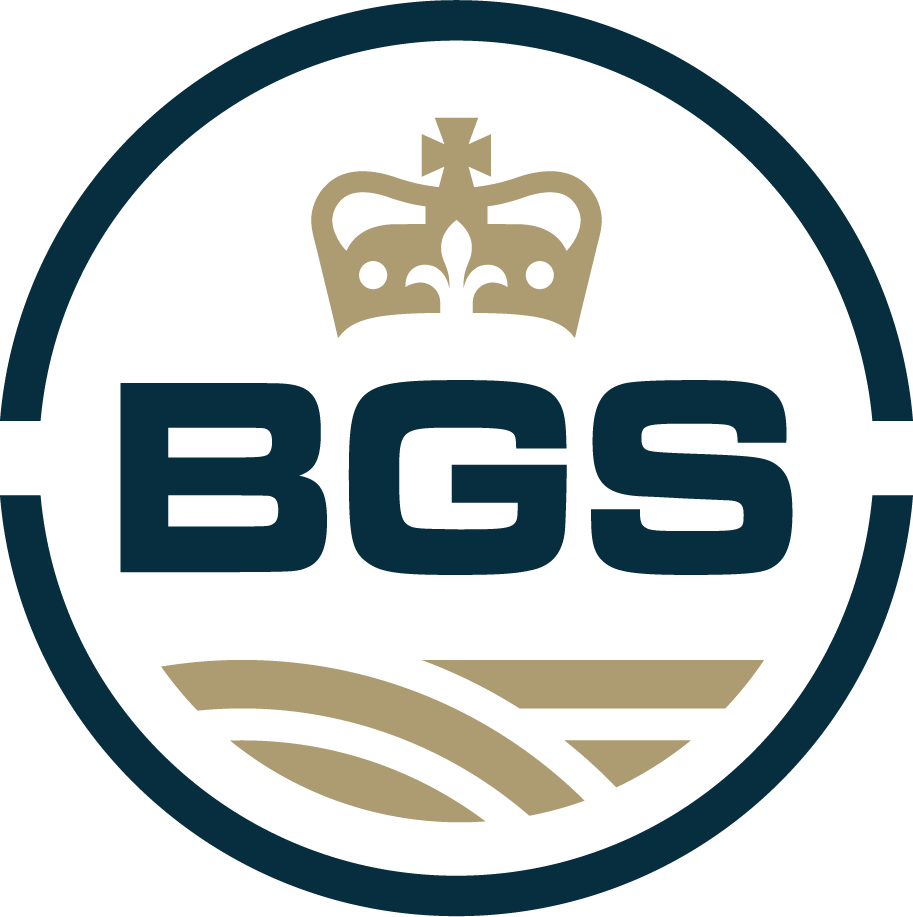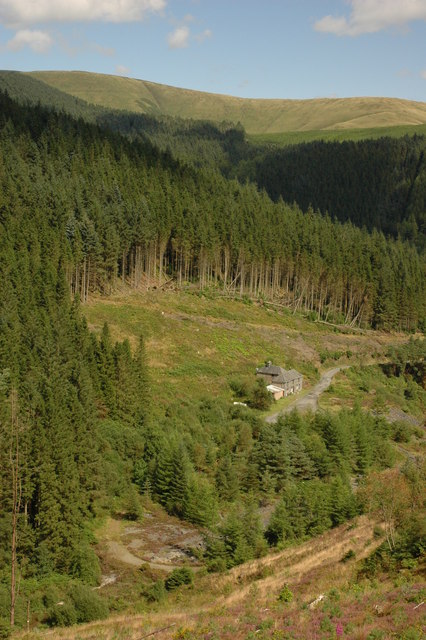|
Narrow Vein
The Narrow Vein Mudstone Formation (commonly known as the Narrow Vein) is an Ordovician lithostratigraphic group (a sequence of rock strata) in Mid Wales. The rock of the formation is silty, homogeneous or finely-laminated mudstone. It generally a medium blue colour. This formation has been commercially quarried as slate in several locations along its length. The formation is between and thick and runs from Dinas Mawddwy south-west to Cardigan Bay at Tywyn. Outcrops The formation is exposed in a number of locations in Mid Wales where glacial valleys cut across it. It is especially visible in the quarries along its length Commercial quarrying The Narrow Vein is one of the two major slate veins in Mid Wales that were commercially quarried. Narrow Vein rock is generally more splittable than Broad Vein rock and was often used to make roofing slates. The Narrow Vein was quarried in the following locations: * Bryn Eglwys where the Broad Vein was also worked, connected to the Talyll ... [...More Info...] [...Related Items...] OR: [Wikipedia] [Google] [Baidu] |
Aberllefenni Quarry
Aberllefenni quarry is the collective name of three slate quarries, Foel Grochan, Hen Gloddfa (also known as Hen Chwarel) and Ceunant Ddu, located in Cwm Hengae, just to the west of Aberllefenni, Gwynedd, North Wales. It was the longest continually operated slate mine in the world until its closure in 2003. Foel Grochan is the quarry on the north side of the valley, facing Ceunant Ddu and Hen Gloddfa on the south; all three were worked as a single concern throughout their history. Rock was mainly extracted underground, though all three quarries had open pits as well. History Aberllefenni quarry may have started operating as early as the 14th century. The earliest confirmed date is 1500 when the local house Plas Aberllefenni was roofed in slates from the mine. In the seventeenth century the Lloyd family owned the quarry, and it passed to the Campbell family in 1725. In 1806, John Davies gained control which passed to the executor of his estate, Pryce Jones, in 1824. It was Davi ... [...More Info...] [...Related Items...] OR: [Wikipedia] [Google] [Baidu] |
British Geological Survey
The British Geological Survey (BGS) is a partly publicly funded body which aims to advance geoscientific knowledge of the United Kingdom landmass and its continental shelf by means of systematic surveying, monitoring and research. The BGS headquarters are in Keyworth, Nottinghamshire, England. Its other centres are located in Edinburgh, Wallingford, Cardiff and London. The current motto of the BGS is: ''Gateway to the Earth''. History and previous names The Geological Survey was founded in 1835 by the Board of Ordnance as the Ordnance Geological Survey, under Henry De la Beche. This was the world's first national geological survey. It remained a branch of the Ordnance Survey for many years. In 1965, it was merged with the Geological Museum and Overseas Geological Surveys, under the name of Institute of Geological Sciences. On 1 January 1984, the institute was renamed the British Geological Survey (and often referred to as the BGS), a name still carried today. Competenc ... [...More Info...] [...Related Items...] OR: [Wikipedia] [Google] [Baidu] |
Hendre-Ddu Tramway
The Hendre-Ddu Tramway was a narrow gauge industrial railway built in 1874 in Mid-Wales to connect the Hendre-Ddu slate quarry to Aberangell station on the Mawddwy Railway. It consisted of a main line long and several branch lines and spurs serving other quarries, local farms and the timber industry. History Construction The Hendreddu slate quarry opened in August 1868, on the north slope of Mynydd Hendre-ddu. The Hendre Ddu Slate and Slab Co. was established by Sir Edmund Buckley. The Company specialised in slate slabs for billiard table beds. Buckley opened the standard gauge Mawddwy Railway in 1867, connecting the Cambrian Railways mainline at Cemmaes Road to Dinas Mawddwy, passing through the village of Aberangell. Buckley's original intention was to build a standard gauge branch from Aberangell to Hendre Ddu Quarry, but access to the required land immediately to the west of Aberangell was blocked by landowner James Walton. To avoid Walton's land, the branch had ... [...More Info...] [...Related Items...] OR: [Wikipedia] [Google] [Baidu] |
Hendre Ddu Quarry (Hendre School), Argentina
{{disambiguation, geo ...
Hendre is an old Welsh word for an old house or winter farmhouse (also spelt ). The name may refer to: Places in Wales * Hendre (Bangor electoral ward), an electoral division in Bangor * Hendre, Llanddyfnan, an area of Llandyfnan, Anglesey * Hendre, Llangedwyn, a Site of Special Scientific interest in Clwyd * The Hendre, a country house in Monmouthshire * Hendre-Rhys, a small village in Ceredigion * Hendre Bach, a Site of Special Scientific interest in Clwyd * Hendre, an area and electoral division in Pencoed, Bridgend * Hendre Hall, near Penrhyndeudraeth, Gwynedd, Wales Elsewhere * Ysgol yr Hendre Ysgol yr Hendre () is a Welsh/Spanish-medium primary school in the large town of Trelew in Chubut Province, Argentina. It was opened on 6 March 2006, initially to teach children between three and five years of age in Welsh and Spanish. The Chubut e ... [...More Info...] [...Related Items...] OR: [Wikipedia] [Google] [Baidu] |
Ratgoed Quarry
Ratgoed quarry (also known as Alltgoed quarry) was the northernmost of the slate quarries served by the Corris Railway. It is one mile north of Aberllefenni in Gwynedd, Mid Wales, on the western side of Mynydd Llwydiarth. The quarry primarily worked the Narrow Vein, though it also produced some Broad Vein slates. Original workings The original workings at Alltgoed Quarry date back to before 1844 when a quarter share of the quarry was put up for sale after the bankruptcy of William Hughes. In the second half of 1840s the quarry was closed. It re-opened in 1851. The quarry expanded in the 1850s and was being run by John Rowlands under the auspices of the Alltgoed Consols, a partnership that also owned the nearby Gaewern and Braich Goch quarries. During the early 1860s shareholder discontent lead to the dismissal of Rowlands, with the quarry now being run by the original owner Horatio Nelson Hughes. Rowlands continued to live at Ratgoed Hall after his dismissal, and was also the ... [...More Info...] [...Related Items...] OR: [Wikipedia] [Google] [Baidu] |
Ratgoed Tramway
The Ratgoed Tramway (originally known as the Ty Cam branch) was a gauge horse-worked tramway that connected the remote Ratgoed Quarry with the Corris Railway at Aberllefenni. It was long. History Opening Ratgoed Quarry was first opened before 1844. After a period of closure in the second half of the 1840s, it re-opened in 1851. In 1859, the Corris, Machynlleth & River Dovey Tramroad (later renamed the Corris Railway) opened between the village of Aberllefenni and the wharf at Derwenlas. This provided a cost-effective transport link for the slate quarries along the Dulas valley, but its northern terminus was at Aberllefenni more than a mile south of Ratgoed Quarry. The 1858 Act of Parliament that authorised the Corris, Machynlleth & River Dovey Tramroad included the Ty Cam branch which ran from Aberllefenni to Ratgoed. This branch was built in 1864, four years after the Tramroad had arrived at Aberllefenni. The branch was later commonly known as the Ratgoed Tramway and altho ... [...More Info...] [...Related Items...] OR: [Wikipedia] [Google] [Baidu] |
Corris Railway
The Corris Railway ( cy, Rheilffordd Corris) is a narrow gauge preserved railway based in Corris on the border between Merionethshire (now Gwynedd) and Montgomeryshire (now Powys) in Mid-Wales. The line opened in 1859 as a horse tramway, running originally from quays on the River Dyfi at Morben and Derwenlas, skirting the town of Machynlleth and then following the Dulas Valley north to Corris and on to Aberllefenni. Branches served the slate quarries at Corris Uchaf, Aberllefenni, the isolated quarries around Ratgoed and quarries along the length of the Dulas Valley. The railway closed in 1948, but a preservation society was formed in 1966, initially opening a museum; a short section of line between Corris and Maespoeth was re-opened to passengers in 2002. The railway now operates as a tourist attraction. A new steam locomotive was built for the railway, which was delivered in 2005. The two surviving locomotives, plus some of the original rolling stock, are preserved on the ... [...More Info...] [...Related Items...] OR: [Wikipedia] [Google] [Baidu] |
Upper Corris Tramway
The Upper Corris Tramway was a gauge horse-worked tramway that connected the slate quarries around the villages of Corris and Corris Uchaf with the Corris Railway at Maespoeth Junction. It was just over long. History Opening The tramway was originally called the Ty'n y Berth Tramway as it was intended to connect to an incline down from the Ty'n y Berth Quarry to the north of Corris Uchaf. This quarry closed before the tramway was built, so the line was terminated in the village and never reached the quarry it was named for. From the early days of operation, it was called the Upper Corris Tramway, after the English name for Corris Uchaf. The tramway opened in 1859, at the same time as the main Corris Railway. Before the First World War In 1909, part of the tramway was re-sleepered. This was the first track maintenance on the tramway for more than 25 years. Closure Slate traffic along the tramway fell steeply between 1924 and 1926. In 1926, the Corris Railway raised it ... [...More Info...] [...Related Items...] OR: [Wikipedia] [Google] [Baidu] |
Corris Uchaf
Corris Uchaf ( en, Upper Corris) is a village lying in the south of the Snowdonia National Park in Gwynedd, Wales. The slate quarries that surround Corris Uchaf are its most prominent feature. Description The village lies in the valley of the Afon Deri ( en, River Deri), and is threaded by the A487 road, a trunk road between Dolgellau and Machynlleth. The Afon Deri runs into the Afon Dulas The quarries around the village are Abercwmeiddaw and Abercorris, Gaewern and Braichgoch. The quarry operations were owned by the Lloyd Family and Wincilate Welsh Slate/Inigo Jones were and are still run by John Lloyd. The narrow-gauge horse-drawn Upper Corris Tramway was part of the infrastructure which carried slate from the quarries to Machynlleth. Corris Uchaf has a garden of Italian Follies or Folly built by Mark & Muriel Bourne, A trust was recently set up to care for the site. The village also contains a local authority homeless and probation hostel in the large building ... [...More Info...] [...Related Items...] OR: [Wikipedia] [Google] [Baidu] |
Braichgoch Slate Mine
Braichgoch slate mine (often called Braich Goch quarry) was a large slate mine located in Corris Uchaf, north Wales. It was worked continuously from 1787 until closure in 1970 (some sources give 1971), apart from a hiatus in the 1900s. Most of the surface workings of the quarry were removed as part of a road widening and landscaping scheme in 1983. Part of the underground mine workings are now open to the public as the King Arthur's Labyrinth tourist attraction (a fantasy journey into Arthurian legend taking place on one level of the mine) and the newly launched Corris Mine Explorers. Through the subterranean Corris Mine Explorer expeditions, the working lives of 19th-century Welsh miners can be seen firsthand. Equipment and discarded personal belongings remain untouched as relics of Welsh industry. The landscaped site above ground is also home to the Corris Craft Centre, a retail site from which several craft based shops operate. History Slate quarrying in the Corris d ... [...More Info...] [...Related Items...] OR: [Wikipedia] [Google] [Baidu] |





